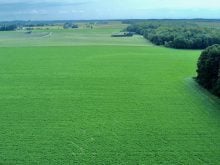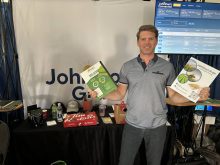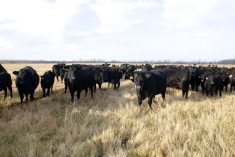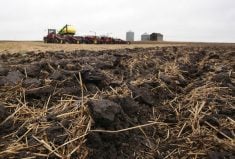Family’s move to use compost to rejuvenate old hayland is part of a bigger decision to embrace regenerative agriculture
SILVER VALLEY, Alta. — It may look like a pile of coffee grounds, but the dried, composted wiggler worm castings can give a northern Alberta farm a much-needed nutrient boost.
What started as piles of manure will eventually be sprayed on most of the 500-acre farm in the form of compost tea to ensure the grey-wooded soils are loaded with beneficial bacteria and fungi.
“It will give us the ability to get the beneficial biology everywhere,” said James Yuha, who began composting manure in 2019 as part of the farm’s push toward regenerative agriculture.
While there was some resistance to adopting a variety of regenerative agriculture from family, everyone has since embraced a variety of new practices from intensive grazing, eliminating fertilizer, pesticides and herbicides, embracing cover crops and changing the manure to compost and then compost tea.
“If I can make some compost and put it on a hayfield and it brings it back to life, that seems like a better option to me. The only problem is we cleaned out all the manure from our 200-cow operation and we only got enough compost for 42 acres,” said Yuha.
“I took a course on soil health and learned that compost is one of the cheapest and most effective ways to regenerate hay and pastureland.”
If the addition of compost can rejuvenate old hay lands instead of incurring the cost of discing old hay fields, reseeding them, praying for rain and hoping for a good catch, then Yuha was in.
“There was a lot that pushed me toward regenerative agriculture, cost being one of them. To increase the profit margin and reduce the amount of times you need to regenerate hay fields was important. It also improves the soil health to be more resilient to drought and floods. More organic matter creates a healthier soil. If you get a little rain the soil holds it more if you get more organic matter. If you get a springtime rain and you can hold the rain you can get more hay to grow every year,” said Yuha.
“I believe in compost because it is a living material. The benefits I see is you put the bacteria onto a living hay field they can attach to the plant and the root in the soil.”
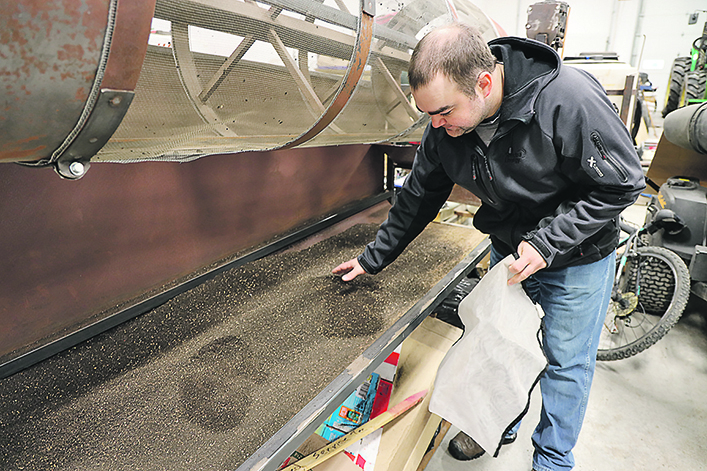
Each fall, manure from the corrals is removed and placed in long windrows to freeze in a nearby grassed area. In the spring, the compost is piled into a narrower windrow and run through their Sittler compost turner. The combination of knives and paddles on the machine turns the pile inside out. Water from a tank following behind is sprayed on the pile to ensure the compost has the required moisture to begin the compost process.
“When you turn the compost, you are aerating the pile and all the bacteria and giving them food and water and air — all the things they need to break down the manure and straw.”
Depending on the temperature of the pile, the compost gets turned about once a week for two months. The goal is to get the compost pile to 54 C, but no hotter than 71 C. After two months, the pile is left and the compost continues to generate bacteria until it is spread on the fields.
In the first year, the compost and non-composted manure was spread on a worked-up oat field, but Yuha could not see any yield benefit from the compost. The part of the field that had non-composted manure was full of weeds. Yuha speculates there were no active roots for the bacteria to attach itself.
The following year the compost was spread on a hay field and that area yielded an additional one bale more per acre than the rest of the field.
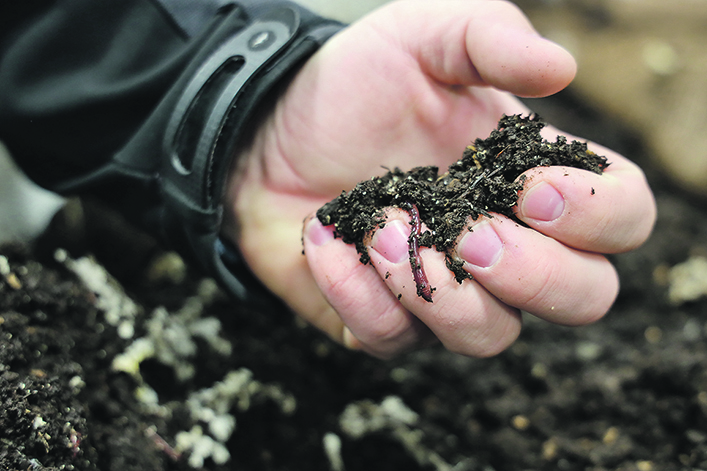
“I would like to do a lot more trials. If I could make enough compost I would do all my hay field because I think that is the best bang for your buck.”
The farm has partnered with the Peace Country Beef and Forage Association’s Living Lab program that matches the research association with farmers to demonstrate management practices that improve production and profitability, while benefiting the environment. Staff from the association have taken baseline samples of the soil and will continue to measure any changes or benefits from the compost for five years.
To get the benefit of the bacteria from the compost across the entire farm, the family has started to brew compost tea. Some of the finished compost is brought into the farm shop and added to a specially designed flow-through worm bin. Red wiggler worms were added to the bin to eat the bacteria from the compost.
The worm waste, or castings, are harvested once every two weeks. A knife at the bottom of the mesh-bottom bin slices the casting and they are run through a drum-like sifter and left to dry. In the spring the dried castings are placed in mesh bags to make compost tea.
The mesh-filled bags are placed into a 300-gallon water tank that is aerated to separate the valuable microbes from the compost. One 300-gallon tank of compost tea creates enough to cover 30 acres of hayland.
“It is extremely huge in bacteria. It is super concentrated,” said Yuha.




